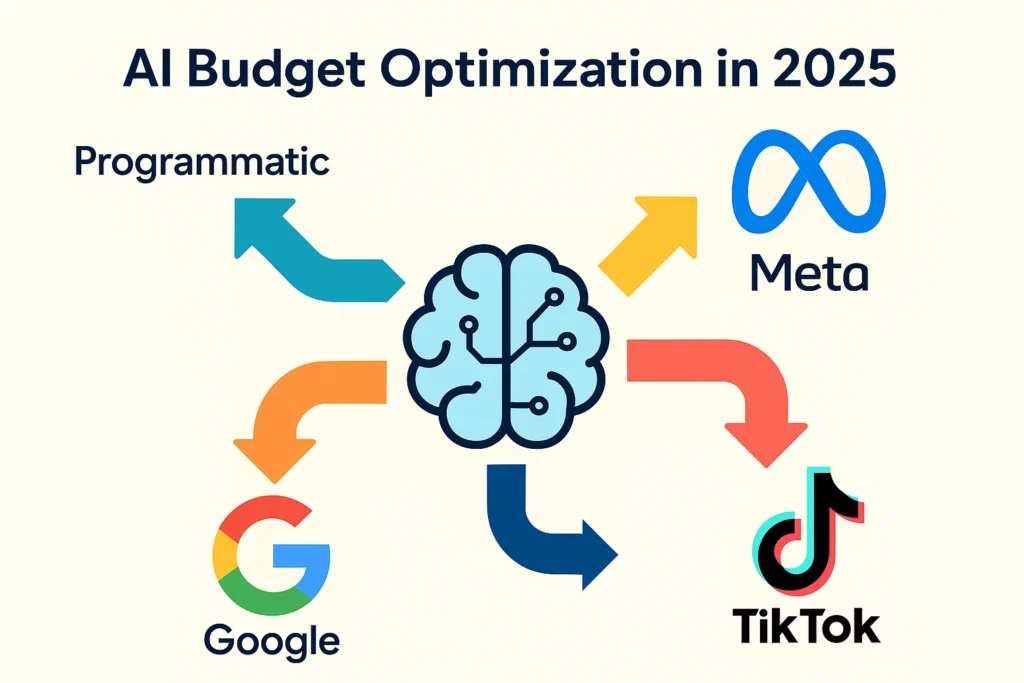
AI Budget Optimization in 2025: How Smart Advertisers Reallocate Spend Across Channels
TL;DR: In 2025, AI budget optimization doesn’t just tweak ads inside one platform—it reallocates budgets across Google, Meta, TikTok, and programmatic in near real time. As a result, the winners treat allocation as a continuous optimization loop: machine learning drives the math, while humans set business guardrails.
Why AI Budget Optimization Matters in 2025
Today, signals are fragmented and privacy limits deterministic tracking. At the same time, media is more diversified than ever. Therefore, manual budget allocation is often slow and biased. AI budget optimization addresses this by ingesting cross-channel data, predicting marginal ROAS, and shifting spend dynamically toward the next best dollar.
For further context, start with our related guides: Best Tools for Online Ads, GA4 + Tag Manager Conversion Setup, Landing Page Optimization Checklist, and the Digital Marketing hub.
How AI Budget Systems Work
- First, ingest spend, revenue, LTV, and channel signals (GA4, server events).
- Then, train predictive models to estimate marginal revenue per dollar by channel.
- Next, suggest or execute budget reallocation daily or weekly.
- Finally, optimize toward portfolio CAC/MER, not silo KPIs.
For example, see official docs: Google Analytics 4 (GA4), Meta Conversions API, TikTok Ads Manager.
Inputs That Matter
- Clean server-side events: deduped with
event_idto avoid double counting. - LTV forecasts: weight channels by cohort value, not just day-0 ROAS. Consequently, AI can prioritize future revenue over immediate returns.
- Creative & landing annotations: budget shifts only work when paired with fresh assets and tested offers.
Platform-Level vs Cross-Platform Optimization
On one hand, Google, Meta, and TikTok have strong native optimizers. On the other hand, none sees your full portfolio. Thus, cross-channel AI layers aggregate data to prevent over-investing where channels cannibalize each other. Moreover, they help capture incremental reach where costs are falling.
If you are deciding between channels, explore Facebook Ads vs TikTok Ads for detailed strengths, formats, and learning phase behavior.
Case Study A — Ecommerce Brand
An ecommerce brand connected GA4 + BigQuery to an AI allocator. Eventually, the model detected Meta broad audiences saturating and redirected 15% of spend to TikTok top-of-funnel, where cost per engaged visitor was ~40% lower. As a result, MER rose 22% with the same budget.
Case Study B — SaaS
A SaaS company balanced Google Search and LinkedIn. Initially, Search hit diminishing returns as incremental leads grew overpriced. Consequently, AI shifted budget to LinkedIn, which had lower volume but a 2.1× higher SQL-to-win rate. Therefore, CAC fell 19%.
Guardrails & Human Overrides
- First, set min/max % allocation per channel and funnel stage.
- Additionally, respect brand safety lists and geo constraints.
- Finally, override for launches or promos that models cannot anticipate.
Operating Cadence
- Weekly: AI outputs budget recommendations; humans review exceptions and creative needs. As a result, changes stay aligned with campaigns.
- Monthly: retrain models with fresh data and seasonality factors. Therefore, the model avoids drift.
- Quarterly: compare business outcomes vs. AI suggestions; update guardrails accordingly.
Checklist
- Server-side GA4 + event deduplication live (
event_id). - LTV models integrated into budget logic.
- Cross-channel spend & revenue ingestion at least weekly.
- Guardrails documented and approval workflow defined.
- Override process for promos and launches clearly agreed with stakeholders.
Conclusion
In conclusion, AI budget optimization doesn’t replace marketers—it frees them from spreadsheet shuffles to focus on creative and positioning. Ultimately, in 2025, the most efficient advertisers will trust AI with allocation while steering it with clear goals and guardrails. Next, explore the Affiliate Marketing with Paid Ads Blueprint or review your tracking with GA4 + Tag Manager Conversion Setup.